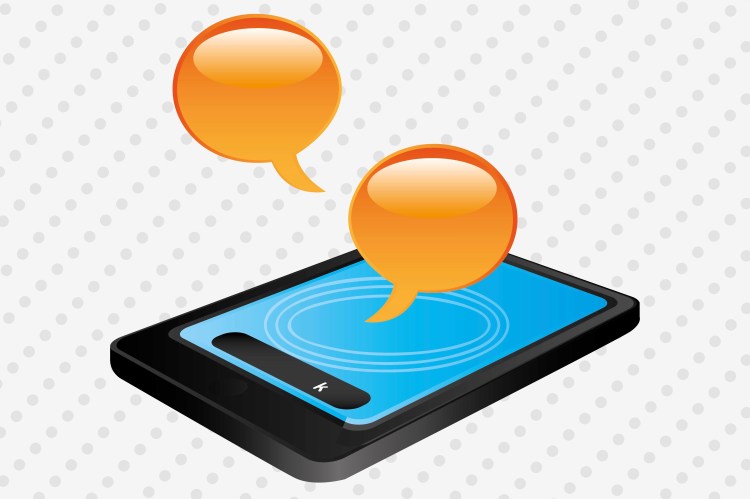Kik’s director of platform services joins our latest VB Live Event to reveal how their 300 million bot users prove the industry is well and fully disrupted—but companies considering bots need to ensure they’re focused on the right things.
Missed it? Catch this free VB Live event on demand right here.
“It’s funny that 2016 is heralded as the year of the bot,” says Paul Gray, director of platform services at messaging platform and bot powerhouse Kik. “If you look back at history, some of the earliest bots are close to 50 years old now, so they’ve been around forever—so why is suddenly 2016 the year of the bot?”
And with major announcements from Google, Facebook, Microsoft, and Amazon, bots seem to have gone from the kind of Silicon Valley craze that whips up a “this is the year of” frenzy to a full-on marketing and sales revolution.
“It’s important to address the hype on bots right now.” says Jon Cifuentes, VentureBeat analyst. “You’ve got every major media publication that covers tech writing about bots. It isn’t just hype — there are serious publications investing a lot of time in understanding this phenomenon.”
The confluence of messaging as part of the core mobile experience and the growth of an always-online culture has created a sweet spot where bots are beginning to sprout like weeds. Bots are relatively frictionless and much easier for users than apps. There’s no downloading, verifying, signing up for an account, and learning a new UI, as with many apps—it’s just texting, which most users are already spending a significant time doing.
And as bot experiences become more engaging with the addition of rich media and improvements in machine learning, the industry is starting to trend toward a near future where users don’t use apps when they’ve got bots in their messenger platform.
“I get a lot of bot pitches every week, and the examples are getting more exciting,” says Jon Cifuentes, VentureBeat analyst. “They’re getting more realistic, where brands would actually want to engage and get some value out of it.”
Warns Gray, “If you’re designing something for the sake of building a bot, then it’s probably not going to do so well. Try to stay more focused and simpler.” That’s what they’ve seen as most successful so far with their huge user base.
Cifuentes points out Sephora as the industry gold standard for all things digital, with flawless execution and a focus on listening to their customers — and their bot is another powerful example of using tech innovations right.
“The Sephora Bot isn’t out there just trying to peddle makeup to customers,” Cifuentes explains. “It wants to understand those customers better on an individual basis, and tries to make them feel wanted and pulled in by the brand, instead of just pushing products at them or asking them questions that takes them down this ecommerce path.”
Messaging and chat is a personal and confidential connection, says Gray. “A private environment, like a messaging channel, between me and the brand is something unique that you can only ever really do in a messaging platform,” he says. Bots are not going to replace existing channels, at least not in the near term, he continues, but they can certainly complement them by providing an avenue, as Sephora does, for deeper engagement.
In the end, Cifuentes says, you need to be really focused on adding value. “Is a news chatbot really that much better than an RSS feed from a user experience perspective?” he asks. “Okay, if it is, why? What kinds of engaging features can you add that would make people actually want to use it, versus just stuffing clips of news articles down their throat in the messaging window?”
In other words, no matter how fevered the excitement and heightened the language around bots is, the industry is still nascent, filled with experiments, trial use cases, plenty of errors, and not a single fully sentient AI entity.
“These talking weather bug things have a lot of the tech community, especially investors, kind of aching for something a little more relevant, and tangible and exciting,” Cifuentes adds. But, he also notes, “a lot of the early apps were flashlights and fart apps, and that’s kind of the commentary we’re seeing around early bots.”
But a wait-and-see attitude isn’t going to launch any business into a brave new, potentially lucrative world of potential. And while the first bot launches aren’t Samantha like in the movie Her, the bot landscape still offers a tremendous amount of potential that’s already being tapped.
“There’s a bot startup out there and they’ve had one of their users purchase $65K worth of goods via SMS, on their bot,” says Cifeuntes, “so people are getting comfortable with this paradigm.”
For more on what arenas are ripe for bot disruption, where your brand fits in, and how to build a bot that keeps them coming back, catch up with the latest free VB Live event today.
Don’t miss out!
Access this VB Live event on demand right here.
In this webinar, you’ll learn to:
- Understand the importance of bots to brands
- Know bot landscape and what it means for your business
- Recognize the potential synergies and pitfalls between bots and brands
Speakers:
- Paul Gray, Director of Platform Services, Kik
- Jon Cifuentes, Analyst, VentureBeat
- Rachael Brownell, Moderator, VentureBeat
This VB Live event is sponsored by ArcTouch.

